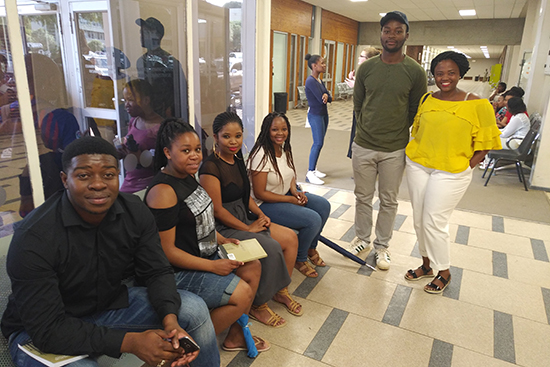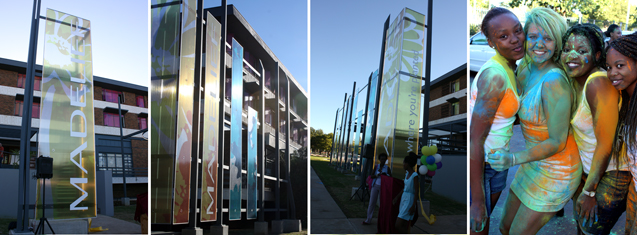Latest News Archive
Please select Category, Year, and then Month to display items
30 October 2018
|
Story Rulanzen Martin
|
Photo Peet van Aardt
 Some of the student writers who contributed to the anthology that tells their stories in Sesotho, isiXhosa, isiZulu, English and Afrikaans.
Some of the student writers who contributed to the anthology that tells their stories in Sesotho, isiXhosa, isiZulu, English and Afrikaans.
How do you transform the higher education curriculum? You involve the exact people the curriculum is intended for. The book, Initiative for Creative African Narratives (iCAN,) illustrates how decolonisation can be achieved through literature for students by students.
iCAN is an initiative by the Centre for Teaching and Learning (CTL) at the University of the Free State (UFS) to mentor students in creative and narrative writing. Under the mentorship of Dr Peet van Aardt, project coordinator, and Ace Moloi, author and UFS alumnus, iCAN Volume 1 was recently launched with 47 short stories written by UFS students.
“The project is a response from the centre for the ever-increasing need for decolonised curricula, steeped in the local cultural perspective of ubuntu,” said Dr Van Aardt.
“This book is an example for how decolonisation can be implemented,” said Prof Francois Stydrom, Senior Director of CTL. The overall aim of the iCAN project is to have the content that materialised from it to be included in the curriculum of first-year students at UFS in the near future.
Book provides multiple voices
Starting in May 2018, CTL presented a series of creative writing workshops on all three of the UFS campuses. “It’s a medium that allows a diverse range of students to express their views and develop their voices as writers,” said Prof Strydom.
It is a form of empowerment, to pass the baton to students to improve the UFS curriculum by writing and publishing their own stories, thereby contributing to larger bodies of knowledge through their lived experiences.
“I believe we as a university need to enable students so that they move away from just being users to becoming contributors to the curriculum,” Dr van Aardt concluded.
Madelief Residence bursts into colour
2014-03-12

You’ll be forgiven for thinking that your eyes are deceiving you when turning into the main entrance to the Bloemfontein Campus. Yet, it is still the graceful old lady of a building called Madelief. This 50-year-old female residence has donned a sparkling new ‘dress’, brandishing a trendy new look.
After extensive renovations kicked off during October last year, the long-awaited revamp left residents and Kovsies astonished. The makeover transformed the building into a sparkling gem, glistening in the Free State sun. Luminescent contra-vision windows, a remodelled veranda and a new façade propel this residence into modernity. A unique twist to the use of the façade is that it is reflective during both the day and night. During the daytime, the light reflects towards the residence and during the night it mirrors the entrance of the university. This feature lends an innovative and vibrant impression to the residence’s appearance.
“I’m so happy for my residence. It’s now the hub of attraction – everyone wants to visit and come have a look. Thanks to our Residence Head, the constructors and designers who came up with this concept and Housing and Residence Affairs. We look 50 years younger indeed and more vibrant,” Mamnosi Tshabalala, a senior resident at Madelief, beamed.
In celebration of this new phase of their residence, students plunged into a festival of colour – power paint exploding into rainbows over anyone who came near. Top management that attended the celebration could not escape the excitement. Profs Jansen and Morgan, Dr Wahl, Mr Koetaan and Rudi Buys were swept into the good cheer, snapping photos and making fantastic memories.